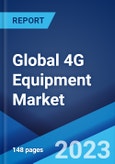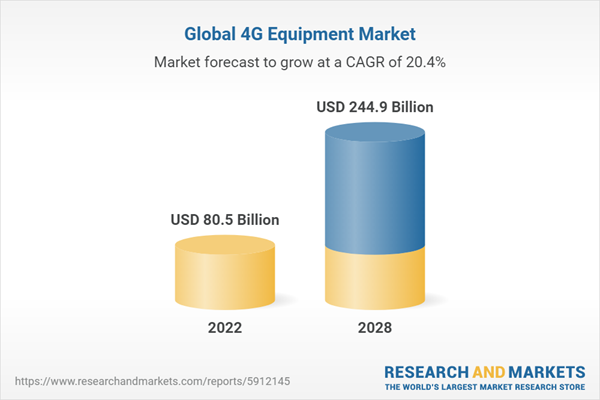4G equipment are fourth-generation wireless communication systems with upgraded data transmission speed and network enhancements. The equipment is categorized into Long-term Equipment (LTE) and Wi-max devices, which include macrocells, small cells, distributed antenna systems (DAS) and testing equipment. They are commonly used for applications that involve virtual presence, navigation, crisis management, telemedicine, remote education, multimedia sharing and tele geoprocessing. These devices are integrated into smart devices, such as smartphones, tablets and notebooks and are more secure than Wi-Fi spots. They also enable the users to get online without plugging into a proprietary system. As a result, they find extensive applications across various industries, including information technology (IT), telecommunication, ecommerce and retail.
4G Equipment Market Trends
Significant growth in the telecommunication industry across the globe is one of the key factors creating a positive outlook for the market. Moreover, a substantial increase in the network traffic is providing a thrust to the market growth. 4G equipment provides faster internet connectivity to smartphone devices, which further enables uninterrupted access to online and live-streamed videos, movies and music. In line with this, the emerging trend of online interactive and multiplayer gaming is also contributing to the growth of the market. Various technological advancements, such as the integration of connected devices with the Internet of Things (IoT), augmented reality (AR) and virtual reality (VR) systems, are anticipated to drive the market toward growth. In addition, 4G equipment is also widely used for operating cloud computing systems for providing access to files and applications to the enterprises in real-time. Other factors, including rising expenditure capacities of the consumers, along with extensive infrastructural development, especially in the developing economies, are anticipated to drive the market toward growth.Key Market Segmentation
This research provides an analysis of the key trends in each sub-segment of the global 4G equipment market report, along with forecasts at the global, regional and country level from 2023-2028. The report has categorized the market based on component, application and end use.Breakup by Component:
- Infrastructure Equipment
- Small Cell
- Macro Cell
- Distributed Antenna System (DAS)
- Testing Equipment
Breakup by Application:
- LTE
- TD-LTE
- FDD-LTE
- LTE A
- Wi-Max
Breakup by End Use:
- Logistics
- E-Commerce
- Smartphone
Breakup by Region:
- North America
- United States
- Canada
- Asia-Pacific
- China
- Japan
- India
- South Korea
- Australia
- Indonesia
- Europe
- Germany
- France
- United Kingdom
- Italy
- Spain
- Russia
- Latin America
- Brazil
- Mexico
- Middle East and Africa
Competitive Landscape
The competitive landscape of the industry has also been examined along with the profiles of the key players being Airspan Networks Inc., Cisco System Inc, Fujitsu Limited, Huawei Technologies Co. Ltd., Motorola Solutions Inc., NEC Corporation, Nokia Corporation, Samsung Electronics Co. Ltd., Telefonaktiebolaget LM Ericsson and ZTE Corporation.Key Questions Answered in This Report
1. What was the size of the global 4G equipment market in 2022?2. What is the expected growth rate of the global 4G equipment market during 2023-2028?
3. What are the key factors driving the global 4G equipment market?
4. What has been the impact of COVID-19 on the global 4G equipment market?
5. What is the breakup of the global 4G equipment market based on the component?
6. What is the breakup of the global 4G equipment market based on the application?
7. What are the key regions in the global 4G equipment market?
8. Who are the key players/companies in the global 4G equipment market?
Table of Contents
Companies Mentioned
- Airspan Networks Inc.
- Cisco System Inc
- Fujitsu Limited
- Huawei Technologies Co. Ltd.
- Motorola Solutions Inc.
- NEC Corporation
- Nokia Corporation
- Samsung Electronics Co. Ltd.
- Telefonaktiebolaget LM Ericsson
- ZTE Corporation
Methodology

LOADING...
Table Information
| Report Attribute | Details |
|---|---|
| No. of Pages | 148 |
| Published | November 2023 |
| Forecast Period | 2022 - 2028 |
| Estimated Market Value ( USD | $ 80.5 Billion |
| Forecasted Market Value ( USD | $ 244.9 Billion |
| Compound Annual Growth Rate | 20.4% |
| Regions Covered | Global |
| No. of Companies Mentioned | 10 |









